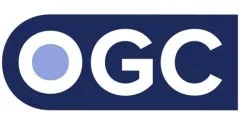In the world of pharmaceuticals, few events generate as much excitement and "need for speed" as the launch of a new product. It is a culminating moment that represents years of research, development, and rigorous testing, bringing hope of improved quality of life to patients who have been waiting for better treatment options. And just like the unveiling of groundbreaking technology, the imminent launch of a new pharmaceutical product generates a "buzz" among healthcare providers, researchers, and patients alike, as they anticipate the long-awaited moment where innovation finally reaches its potential to change lives.
Far from coincidence, this buzz is the result of meticulous and strategic planning by pharmaceutical companies, which typically begins long before a new product is even approved for use. A critical component of this planning is ensuring that both the run up to launch and launch itself are done in compliance with a myriad of global healthcare compliance laws, regulations and agency guidance. In this blog post, we explore how Medical Science Liaisons (MSLs) are beginning to play a pivotal role in the compliance work that is required during the product launch process.
Building the Buzz
Most pharmaceutical companies follow a similar launch playbook that
includes these core elements:
- Strategic Communication: As with any commercial effort, effective communication is key. Pharma companies will leverage various channels, including social media, press releases, and healthcare conferences, to disseminate information about their new product, highlighting benefits, clinical trial results, and of course, its potential impact on patient care.
- Collaborative Engagement: Engaging with key opinion leaders (KOLs) and influencers in the healthcare sector is critical to amplifying the message. These respected voices in the medical community lend credibility and generate interest among healthcare providers and patients.
- Educational Initiatives: Organizing webinars, workshops, and seminars to educate healthcare professionals about a new product ensures they are well-informed and prepared to discuss it with their patients. These initiatives also foster a sense of anticipation and readiness within the medical community.
The Role of Medical Science Liaisons
Medical Science Liaisons (MSLs) are field-based professionals
(typically within the company's Medical Affairs function) who
help bridge the gap between pharmaceutical companies and the
medical community. Although their responsibilities span the entire
product lifecycle, MSLs are becoming the unsung heroes of a new
product launch by leveraging their vast scientific knowledge to
ensure that accurate information is communicated effectively and
compliantly. Among other things, MSLs contribute:
- Scientific Expertise: MSLs are subject matter experts who possess in-depth knowledge about the science behind a new product. They are able to provide critical scientific information and insights to healthcare professionals, answering questions and addressing concerns with precision and accuracy.
- Compliance Assurance: MSLs are tasked with ensuring that communications and interactions adhere to all company policies and procedures, in addition to the complex legal and regulatory requirements, all while maintaining the integrity of the information shared and avoiding any potential pitfalls associated with misinformation.
- Relationship Building: By fostering strong relationships with healthcare providers, MSLs create a network of advocates who are well-versed in the new product's benefits and applications. These relationships are built on trust and mutual respect, enhancing the product's credibility.
Compliance Tips for Medical Science
Liaisons
Since compliance is a paramount concern of all pharmaceutical
companies, it is vital that MSLs strike the right balance between
supporting a successful product launch and meeting the
company's compliance obligations. To help, here are some best
practices for ensuring compliance that MSLs should consider:
1. Collaborate Cross-functionally
MSLs are expected to adhere to the company's internal policies
and procedures, as well as understand the current legal and
regulatory landscape inside and out. Working closely with the
Medical Affairs leadership, company attorneys, and compliance staff
can help MSLs stay informed and ensure that all materials and
communications intended for healthcare providers are reviewed and
approved in accordance with the company's material review and
approval process. This cross functional collaboration (which
usually includes stakeholders from legal, compliance, regulatory,
medical and commercial) is critical to a successful launch.
2. Communicate with Transparency
MSLs should always strive to provide clear, accurate, and
evidence-based information, while avoiding exaggerated claims or
unsupported statements about a new product's efficacy or
safety.
3. Focus on Education
Initiatives that aim to educate and inform healthcare professionals
about a new product's clinical benefits, usage, and potential
side effects can help MSLs foster trust and credibility with the
medical community. Since the role of an MSL is centered around the
science, their activities should not fall into the realm of
commercial and product promotion.
4. Measure Impact
Regular review of feedback from healthcare providers and patients
can help MSLs gauge the success of a new product launch, and if
necessary, guide them in adapting their strategies for achieving
launch-related goals. By staying responsive to data, MSLs can
ensure the effectiveness of the launch within the applicable
compliance boundaries. That said, MSL compensation should never be
tied to product sales figures or other data-driven KPIs.
5. Reflect the Tone from the Top
MSLs should find ways to incorporate leadership directives citing
zero-tolerance for non-compliance when developing and implementing
policies, SOPs and work guidelines. This messaging can provide
strong and compelling support for the MSL's compliance role by
demonstrating that the compliance function is not operating on an
island—even in an environment that demands the "need for
speed."
Launching a new pharmaceutical product is a moment of immense excitement and promise. By leveraging the role of the MSL, companies can successfully introduce their innovative products to the market while simultaneously ensuring compliance with myriad laws, regulations and guidance. Moreover, through use of internal controls, strategic communication, and collaborative engagement, MSLs can achieve the delicate balance expected of their role, that, when achieved, can lead to transformative advancements in patient care and well-being.
The content of this article is intended to provide a general guide to the subject matter. Specialist advice should be sought about your specific circumstances.


